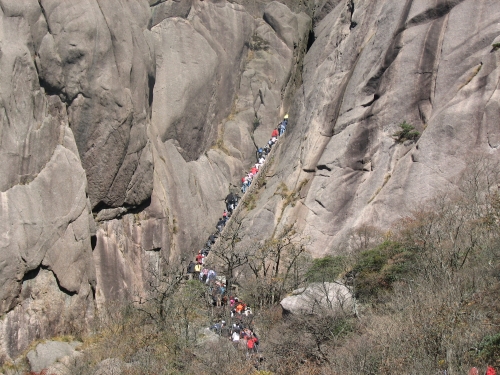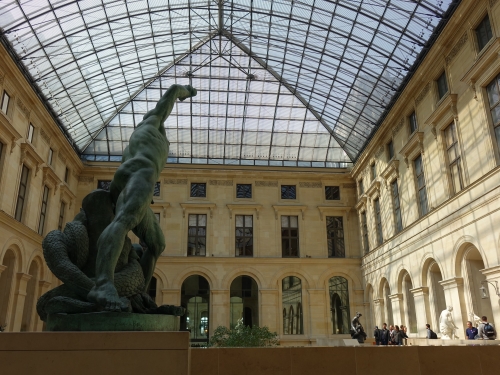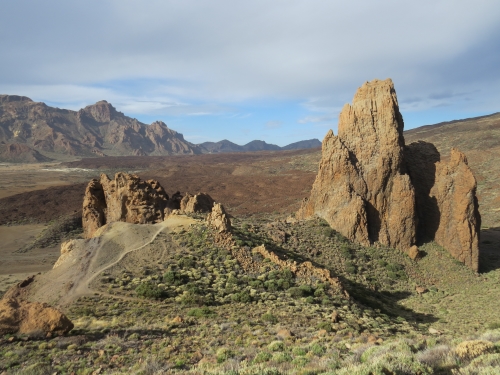Blog Connections
One million or more
Since a couple of years we maintain a Connection at this website called One Million Visitors or More. It contains the sites - with entry regulations - that are visited by more than 1 million people yearly. The list currently sports 90 WHS; so some 8% of the sites on the List we can regard as highly visited. Over the past few days I have brushed up this Connection and tried to replace older visitor statistics with those from the past 2 or 3 years. Below are my findings.

I had to remove Mammoth Cave, Canterbury Cathedral, Museuminsel and the Tokyo Museum of Western Art (one of the Corbusier locations): they fell below the one million a year mark. Berlin’s Museuminsel seems to suffer from the renovations that have been taking place since 2014 at the Pergamon room with the Altar in the Pergamonmuseum. Canterbury Cathedral had to deal with both the introduction of an entrance fee and fear of terrorism: "Our only problem has been a drop in continental school groups. Because we are on the way from Dover to London, about 25 per cent of our visits are school groups.”
Other significant drops in visitor numbers include the Acropolis (almost half in from 2009-2017) , Istanbul’s Hagia Sophia, Paris (a 15% drop blamed to terrorism, measured by the Louvre statistics) and the Tower of London. They all are well above the one million threshold though, and may rebound quickly with the increase of political stability in Greece/Turkey and the absence of terrorist acts.

However, the visitor numbers of most in this already highly visited group of world class sights are on the rise. At least 13 WHS have risen significantly, adding another million yearly visitors or even doubling their figures. These include various sites in and around Rome (Colosseum, Vatican Museums) and Pompeii. St. Petersburg’s Hermitage leapt from just over 3 million to 4 million in the years between 2014 and 2016. This is attributed to the increasingly easy and fast railway connections with Moscow and Helsinki.
Iconic sites such as Chichen Itza, the Taj Mahal, Borobudur and Schönbrunn, and even Auschwitz, have seen sharp rises in visitor numbers as well. Almost unbelievable numbers are coming from China. An essentially quite remote natural site such as Jiuzhaigou saw 5.14 million visitors in 2016. Huangshan had 3.3 million, a rise of almost 2 million since 2001.

The growth of overseas travel by Chinese tourists is often seen as the main reason for these strong growth rates. At the Kremlin museum in Moscow (2.2 million people yearly), they report: “a huge wave of Chinese tourists has descended on the Kremlin, far outnumbering the previous flows of American visitors. The Chinese visits are usually organized by Communist labor unions. Most of these tourists are elderly, and still remember the period of Chinese-Soviet friendship. ‘They always ask where Lenin and Stalin lived, and are disappointed when I tell them that the Lenin exhibit has been moved to his residence at Gorki Village near Moscow’”.
Els - 3 March 2018
Comments
Solivagant 3 March 2018
The number and concentration of Chinese visitors in Thalland last December was just overwhelming - at 10 am a "never ending" stream walking down Atsadang Rd towards the Palace area. All led by their respective guides and the obligatory "Recognition flag". You can get advice on timing to minimize the crowds at Wat Pho etc but you won't escape! Guangdong - Bangkok is a mere 2hrs 40 mins for 1700 kms. In 2016 there were just under 9 million Chinese tourists into Bangkok - a 3 fold increase in 5 years and both Bangkok airports are operating at way over capacity. 10 million is forecast for 2018. Even if those numbers were evenly spread (which they are not - don't even think of going at the time of Chinese Holidays) that would mean 25000 visitors to the Palace each day! See -ttps://www.bloomberg.com/news/articles/2017-12-20/thai-airport-misery-may-last-years-as-chinese-overwhelm-upgrades
The vast numbers bring with them vast problems for the Thai authorities and the benefit to Thailand is minimised by such tourism-spend often going straight into the hands of Chinese, by-passing Thais and government taxes.! Look up - "Zero $ tourism" (everything paid "up front" and nothing to Thai businesses) and "forced shopping" (so the organisers make something at "their" shops and restaurants from under-priced packages!). Such numbers strain relationships,and Thai Newspapers contain reports of anger arising from cultural conflict between Thais and Chinese, See - http://packthailand.com/rude-chinese-tourists-behaviour/